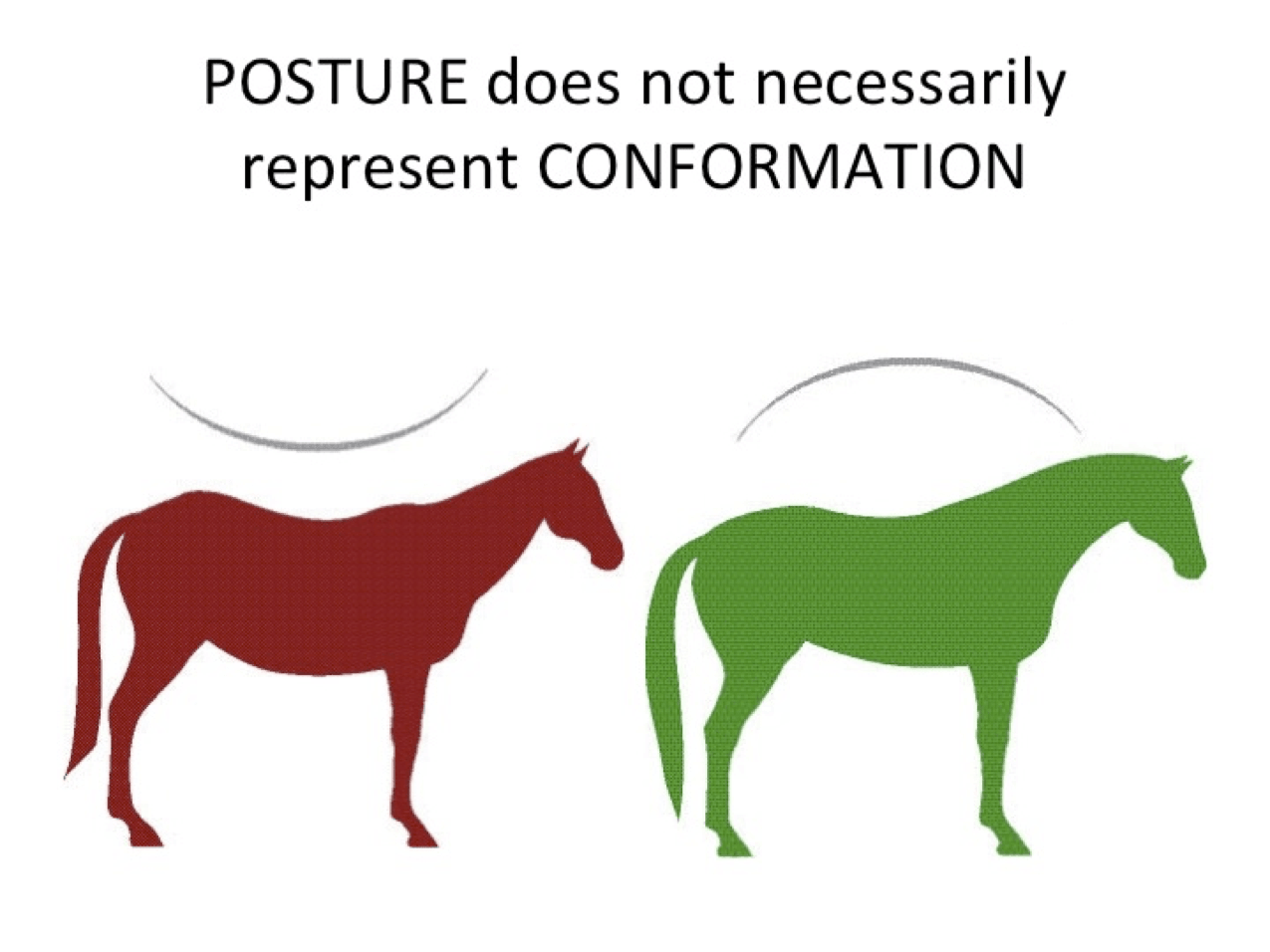
Have you ever noticed if your horse’s head nods UP or DOWN while traveling at the walk? Or holds head and neck stiff and/or high at the trot?
When horses are UNCOMFORTABLE because of “pinchy” saddles, they will: hollow their backs away from their saddle and rider, drop their bellies, shorten their strides as they struggle with shoulders unable to move freely under the front of the saddle, stick out their noses, brace and shorten their necks (which will usually look skinny), head/neck combo will look shorter than the body, they’ll have pained expressions on their faces ….and their heads will nod ‘up’ not ‘down‘ with each step at the walk.
Part of the package when this happens: muscles, tendons, and ligaments (and emotions!) are put under strain. The bones of the skeleton (connected by these soft tissues) can get realigned to varying degrees. Posture looks less than the perfect conformation with which a horse was born. Over time, a health toll is taken. Additionally, high headedness and poor posture caused by discomfort render horses anxious, affect breathing and heart rate, raise levels of adrenaline and make them more likely to spook because feeling safe while uncomfortable is impossible for a prey animal. People sometimes refer to heads held high as being “above the bit”. It can happen for reasons other than saddles (poor riding and behavioral issues) but ruling out saddle pressure is important to do.

A COMFORTABLE horse will: have a saddle built to ‘welcome’ and ‘allow’ unrestricted shoulder action and expansion of the horse’s back, which happens from the moment the first step is taken. A conforming cushion “interface” between the horse’s body and the underside of the saddle is a huge bonus, too. It should include a therapeutic pad and tapered foam shims installed in the right place to support and balance the saddle properly while preserving room for the shoulders to swing underneath the front of the saddle. This encourages the engagement of abdominal muscles and pushing upward of the trunk to carry a rider. Hindquarters can be more powerful and keep weight off the forehand while hind legs can reach deep and forward underneath. The horse’s topline stretches from head to tail in a comfortable arch rather than being tense, flat, or concave. The head and neck will look as long as the body. Strides will be obviously more effortless and rhythmic. When all this works as nature intended, your horse’s will ‘nod’ down.
Horses reaching forward and down with head and neck will have stretched backs and well-aligned vertebrae increased ability for lateral flexion, recruitment of abdominal muscles, and the likelihood of mental relaxation among other health benefits.
Here’s a video clip illustrating the difference so you can see some of what to look for from the list above.
If you have trouble being sure which direction your horse is nodding, have a friend take some video and send it to us. We’d be happy to help you understand what is going on and fix it if you’ve got a problem. Usually, just a simple tapered foam shim in the right place can be a miracle worker for you and your horse. We’d love to hear from you and put our 20 years of research to work just for you.
EMAIL [email protected] or visit www.naturalhorsemansaddles.com
Other articles that may interest you…
